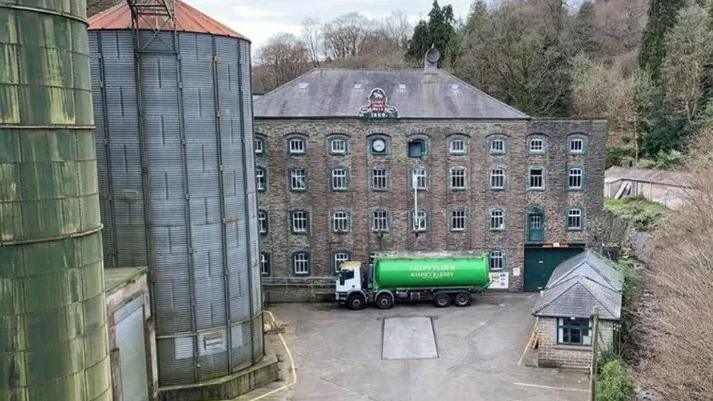Flour mill and swing bridge given protected status

Ramsey Swing Bridge was officially opened in 1892
- Published
A flour mill to the east of the Isle of Man and a swing bridge in the north, both built in the 19th Century, have been given protected status.
The Laxey Glen Flour Mill and Ramsey Swing Bridge have been added to the Isle of Man’s register of protected buildings.
The new status means that the structures cannot be altered or demolished without the permission of the Department of Environment, Food and Agriculture (Defa).
A Victorian era house in Douglas has also been added to the list.
Leyton, which is on Victoria Road, was designed in an Arts and Crafts style in 1896.
Defa said the house was of historic interest because it “illustrates the arts and crafts style of architecture that formed a key part of the island’s cultural history during the late Victorian era”.

Laxey Glen Flour Mill's main building has been registered along with other structures on the site
All three of the properties were officially added to the register on 28 February.
Opened in 1861, the mill was the largest of its kind built on the island during the Victorian era.
Defa said, despite a blaze in that gutted most of the building in 1921 the structure still retained “many elements of historic fabric, detailing and plan form”.
Originally constructed to serve the workers at the Great Laxey Mining Company, it was designed by Robert Casement, who also designed the Great Laxey Wheel.
The department said the Ramsey Swing Bridge was the only example of its type on the island and represented an early example of the work of the internationally renowned Cleveland Engineering and Bridge Company.
Opened on 29 June 1892, it was one of the principal structures in the town’s expansion during the 19th Century, and was a “an essential factor in the successful development of the Mooragh and northern harbour areas”, it added.
Why not follow BBC Isle of Man on Facebook, external, and X, external? You can also send story ideas to IsleofMan@bbc.co.uk
Related topics
- Published8 December 2023

- Published27 December 2023
